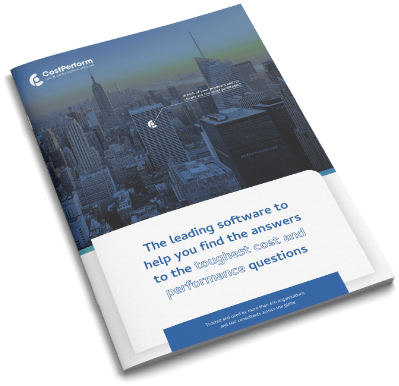In the dynamic landscape of modern business, understanding your business’s cost structure and employing effective cost modeling techniques have become crucial for sustainable growth and strategic decision-making. With the right insights, your business can benefit from an improved cost structure and achieve more financial success. In this blog, we delve into the significance of cost modeling for understanding your company’s cost structure.
What is the importance of analyzing your cost structure?
Cost structure refers to all the costs (fixed and variable) that a business incurs to produce goods or services. This encompasses the various expenses involved in running a business, such as raw materials, labor, packaging the finished product, and much more. Having insight into all these expenses is vital for businesses as it provides information about their financial health, profit margins, and the efficiency of their operations. Having an overview of your cost structure helps your company in various ways. We’ll explain some the benefits for you:
- Profit maximization: Understanding your cost structure helps you identify areas for cost reduction, ultimately improving profit margins.
- Pricing strategy: Effective cost analysis serves as a guide for businesses to set appropriate pricing strategies.
- Resource allocation: By comprehending cost components, your business ensures resources are allocated optimally.
- Strategic planning: With a clear picture of your cost structure, decision-making becomes easily aligned with your financial goals.
How do you gather insights with cost modeling?
Having an overview of the cost structure answers the ‘what’-question, but how do you gain insights into this often complex phenomenon in major corporations? That’s where cost modeling comes into play. This process involves creating a mathematical or computational representation of your business’s cost structure. You create a model to simulate how different factors impact costs under varying scenarios, now and in the future. This allows your business to make informed decisions about new product implementations, process optimizations, and more.
Here’s a step-by-step explanation of how cost modeling works:
- Identify your objective and the key factors that influence your costs. These variables serve as the building blocks for your cost model.
- Choose a modeling method that suits the complexity of your cost structure.
- Gather accurate and relevant data for each variable. This data can come from various sources like records and historical data.
- Construct the algorithms that represent the relationship between the variables and associated costs.
- Validate and test your model to improve its accuracy and reliability, and experiment with new scenarios to evaluate future business scenarios
- Interpret your results and look for trends and patterns to help you make informed decisions based on data-driven insights.
- Update your model regularly to make sure your cost analysis stays accurate and represents your current or expected cost structure.
Cost modeling software provides a promising solution that really helps your business grow. Do you want to know more about how software simplifies and improves cost modeling? Read all about it in our blog.
Improving profitability with cost modeling: An example
To give you an idea of the benefits of cost modeling, let’s look at a concrete example. Imagine your business is an automotive manufacturer, facing stagnant profit margins. You’re yielding a profit margin of around 8%, but feel like there’s room for improvement. You think it’s due to inefficiencies in the production process. To validate this gut feeling, you employ cost modeling to assess if your assumptions are correct.
By implementing cost modeling, you simulate different scenarios using real-time data. You discover that optimizing production schedules reduces the per-unit costs of producing a number of specific car models significantly. Equipped with this insight, you make the necessary schedule changes, elevating your profit margin to 12%.
How do you choose the right software for cost modeling?
To understand your cost structure, choosing the right software is essential. This decision can significantly impact your organization’s ability to analyze and optimize your cost structure, so you want to make an informed choice. Consider the following aspects to choose the right software for your organization’s needs:
- Define your requirements and key features: Before exploring different software possibilities, clearly define your organization’s requirements and the key features that align with them.
- Research software options: Explore the market for software solutions, search for information about the reputation of several providers, and read more about how they’ve helped similar businesses with their cost modeling.
- Consider demos: Several businesses offer free demos to give valuable insights into key features of the software and the compatibility with your organization’s needs.
- Check for vendor support: Consider the level of customer support the vendor provides. This is crucial for ensuring a smooth software implementation and resolving issues diligently.
Our solution for cost modeling
With our software, you can visualize the layers of your organization’s cost structure, and use them as building blocks to represent the current or future cost structure of your organization. Our software helps you to establish the objects, find cause-and-effect relationships and visualize them into a cost model. This equips your business with valuable insights into the often complicated cost and capacity flows. Additionally, we have several templates available that are commonly used in various industries, giving you ease of implementation and efficiency.
Do you want to know more about how cost modeling software can help your business?
Download our brochure now!
